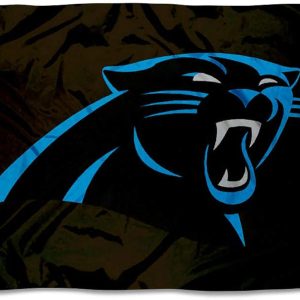The Tampa Bay Buccaneers have carved a legendary path in the annals of professional football, not just with their iconic pirate-themed brand but with a storied history that showcases triumphs, trials, and tenacity. As the latest season unfolds, it brings with it a blend of nostalgia for past glory and the fresh excitement of new talents and strategies. The Tampa Bay Buccaneers, known for their fierce determination on the field, invite fans to join them as they embark on yet another chapter filled with unrivaled ambition, unforgettable moments, and a deep-seated desire to claim supremacy once more.
The Rise of the Buccaneers: From Underdogs to Champions Tampa Bay Buccaneers
The journey of the Tampa Bay Buccaneers has been a tale of resilience and evolution. Since their inception in 1976, the team has witnessed numerous highs and lows, each season laying the foundation for its remarkable legacy. Understanding this evolution offers insight into what makes the franchise resonate deeply with fans.
Historical Context of the Team
The Tampa Bay Buccaneers started from humble beginnings in the National Football League (NFL), suffering through several losing seasons. However, the appointment of head coach John McKay in the late 1970s marked the beginning of a transformative era. McKay’s irreproachable humor and coaching expertise slowly turned the tides for the Bucs, solidifying the groundwork for future successes.
The late ’90s saw the Bucs starting to build a formidable defense led by stars like Warren Sapp and Derrick Brooks. This period culminated in their first Super Bowl appearance—and victory—during the 2002 season. This win set a benchmark for all future endeavors, igniting hope among fans and establishing the club as a contender within the league.
Key Players and Their Impact
A cornerstone of any successful team is its players, and the Tampa Bay Buccaneers have had some true legends donning their famous colors. Quarterback Trent Dilfer, who played during their earlier years, laid the groundwork for the organization’s optimistic outlook. Yet, it was undoubtedly the arrival of quarterback Brad Johnson and tight end Ken Dilger, combined with an elite defensive unit, that propelled the team toward greatness.
More recently, the acquisition of Tom Brady revitalized the franchise and brought an incomparable winning mentality, allowing the Bucs to capture their coveted second Super Bowl title in the 2020 season. Brady’s leadership both on and off the field injected renewed vigor into the team’s roster and instilled a hunger for victory across the squad. His work ethic became a role model for players wanting to elevate their game, inspiring camaraderie and pushing everyone to offer their best.
The Cultural Significance of the Franchise
Beyond wins and losses, the Tampa Bay Buccaneers embody a unique cultural significance within the community. The franchise symbolizes unity, fortitude, and pride for its fanbase. Its pirate ship motif captures the imagination of fans, creating a vibrant and enthusiastic atmosphere at home games in Raymond James Stadium.
Moreover, the Buccaneers’ commitment to charity and local involvement extends beyond the field. Initiatives related to youth programs, health awareness, and disaster relief resonate deeply with community members. Fans connect on a personal level, fostering faith not just in the franchise but in the larger mission it represents.
The Current Roster: Strengths and Challenges Tampa Bay Buccaneers
As any sports fan knows, every season presents fresh opportunities and challenges. The Tampa Bay Buccaneers entered the current season with high hopes, driven by potential yet laden with expectations. Analyzing the current roster reveals both impressive strengths and notable vulnerabilities.
Offensive Line Dynamics
The offensive line has been pivotal to the team’s success, acting as the shield that allows quarterbacks to thrive. Balanced protection is essential, particularly for a quarterback like Tom Brady, who thrives in clean pockets. This season appears promising, as recent drafts and strategic trades build a robust front line capable of withstanding the pressures of strong defenses.
However, depth remains a concern. Should injuries or performance issues arise, the Buccaneers must have a contingency plan. Developing younger talent behind seasoned veterans will be crucial, allowing for growth without sacrificing quality on the field.
Quarterback Situation: Beyond Brady
While Tom Brady is undeniably a football icon, discussions about life after Brady remain necessary for the long-term viability of the Tampa Bay Buccaneers. Whether it’s a young quarterback waiting to seize the reins or other potential candidates, the anticipation around the succession plan continues to grow.
Investing in quarterback development pays dividends—preparing future leaders while ensuring stability when the inevitable change arises. The management faces a balancing act; developing a future star while still leveraging Brady’s wealth of experience results in strategic coaching decisions benefiting the organization as a whole.
Defensive Strategies
Defensively, the Tampa Bay Buccaneers boast one of the most fearsome lineups in the league. Anchored by defensive stalwarts like linebacker Devin White and safety Antoine Winfield Jr., the unit possesses speed, tenacity, and intelligence. Coordinators are tasked with finding ways to effectively harness this athleticism into sophisticated game plans that can stifle even the fiercest of offenses.
Nevertheless, consistency serves as a significant challenge. The defensive unit must continue adapting to an evolving league landscape, where offensive schemes become increasingly unpredictable. Balancing aggressive play-calling while maintaining discipline will be paramount for the Buccaneers to impose their will on their opponents and ultimately secure victories.





